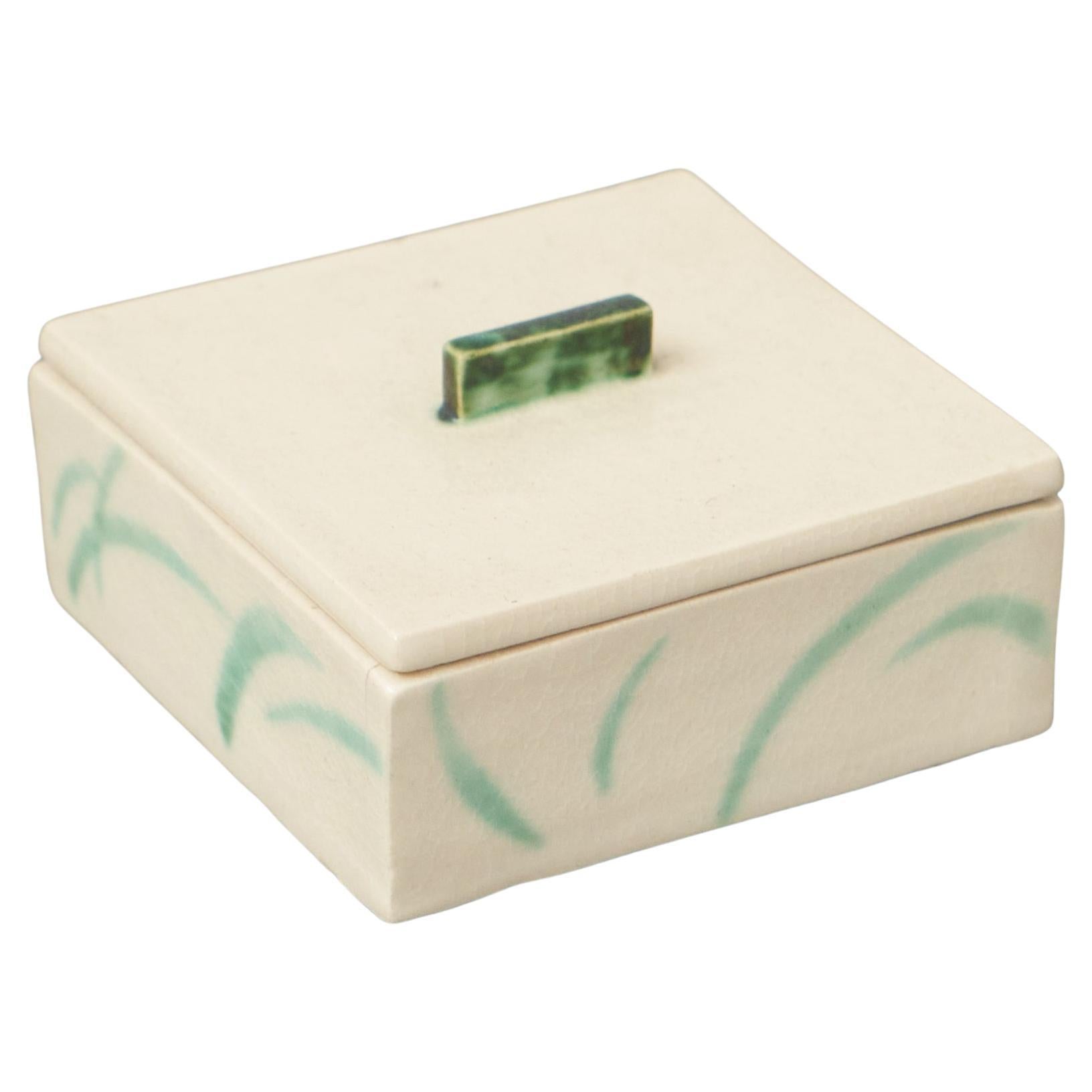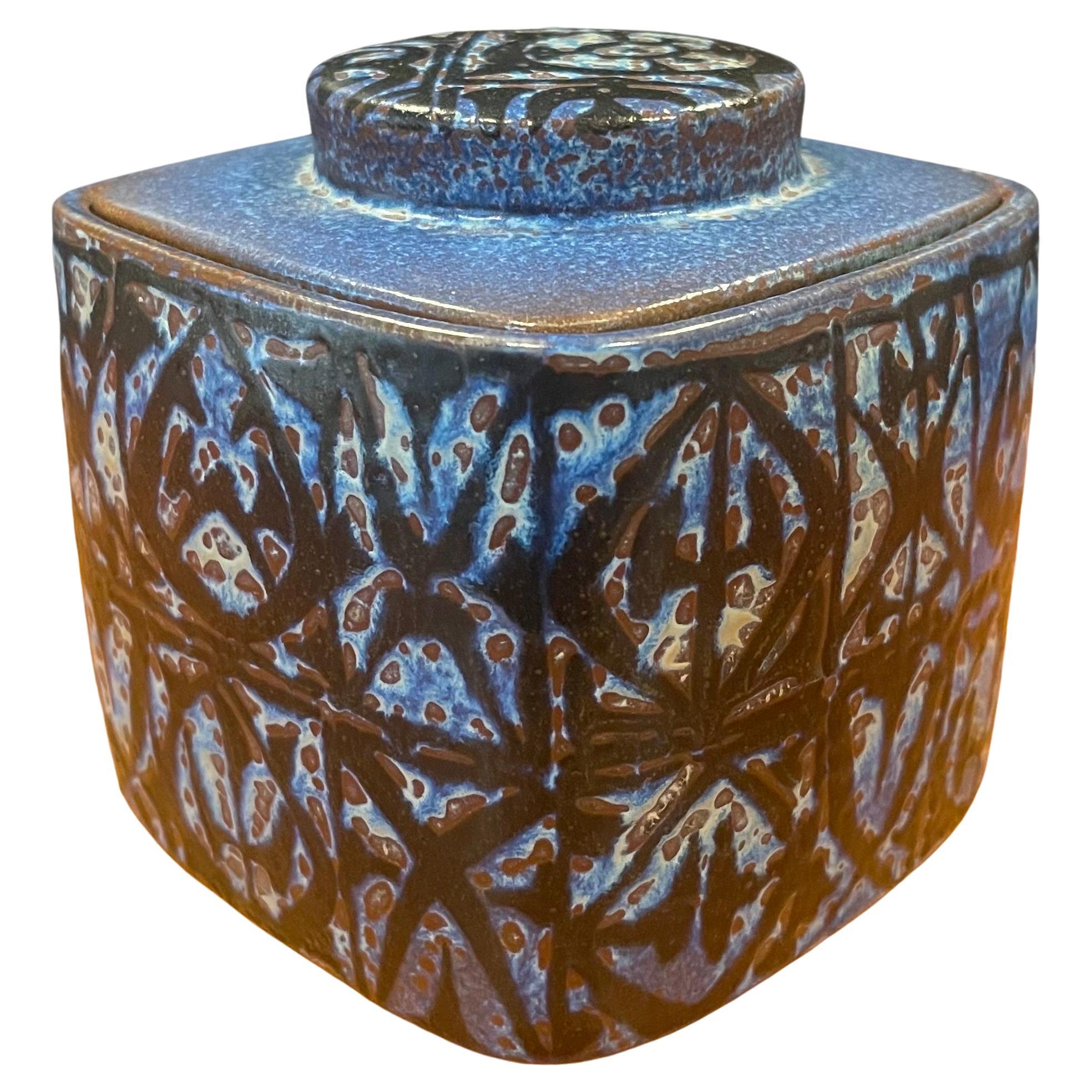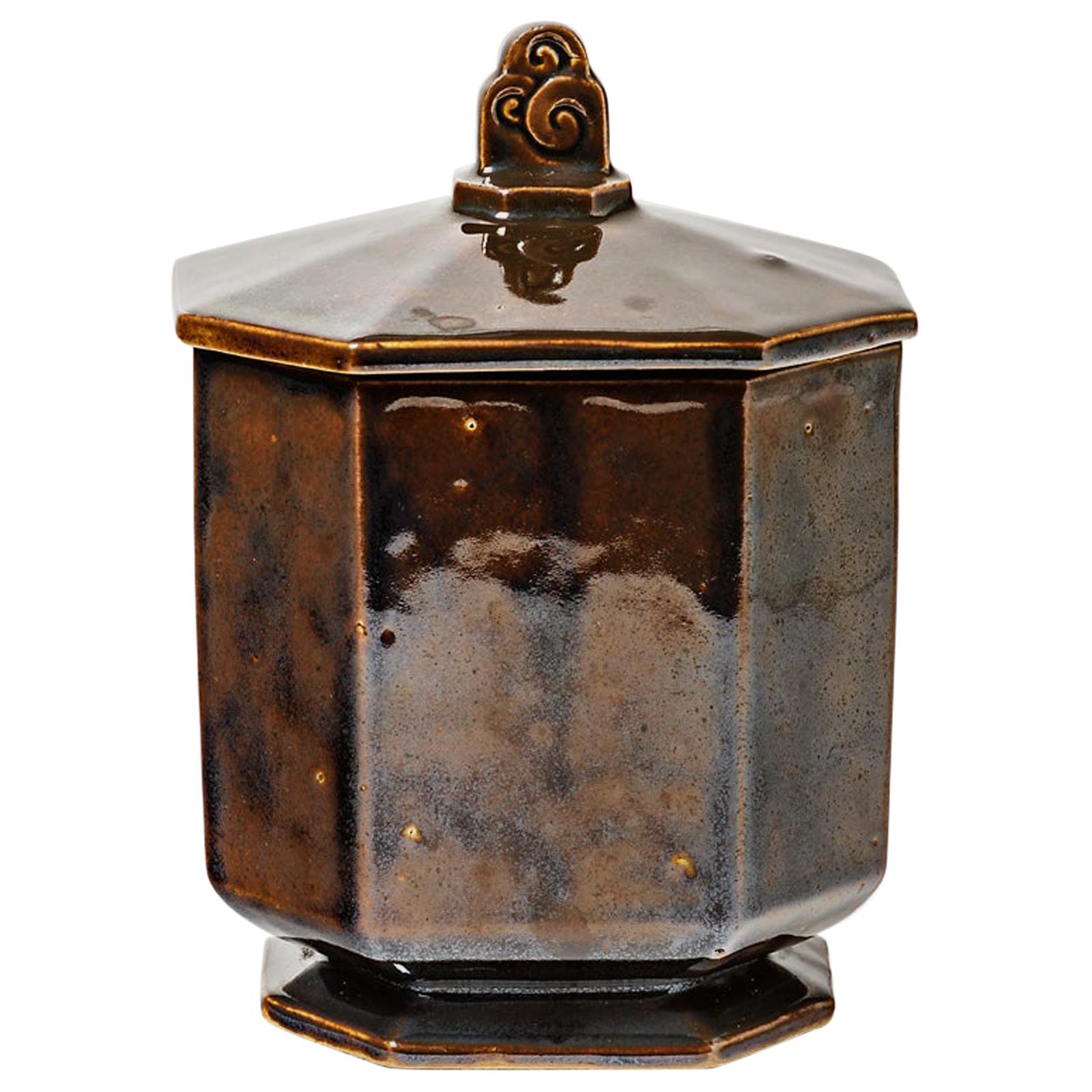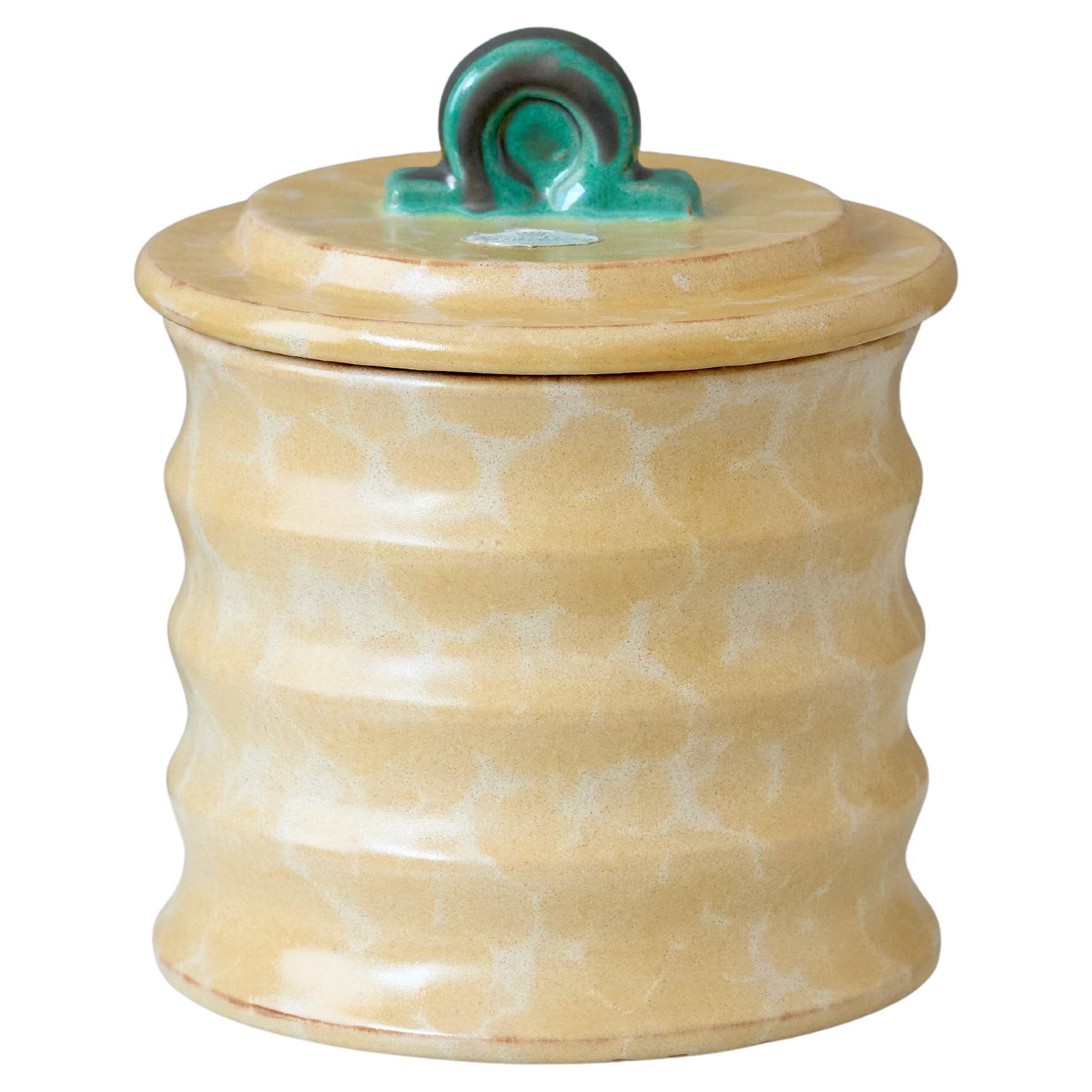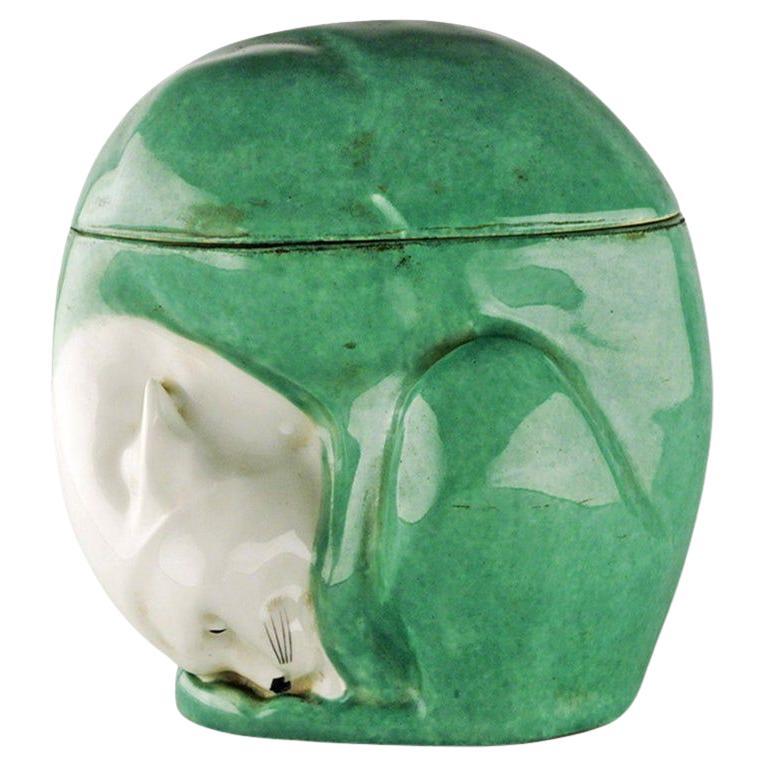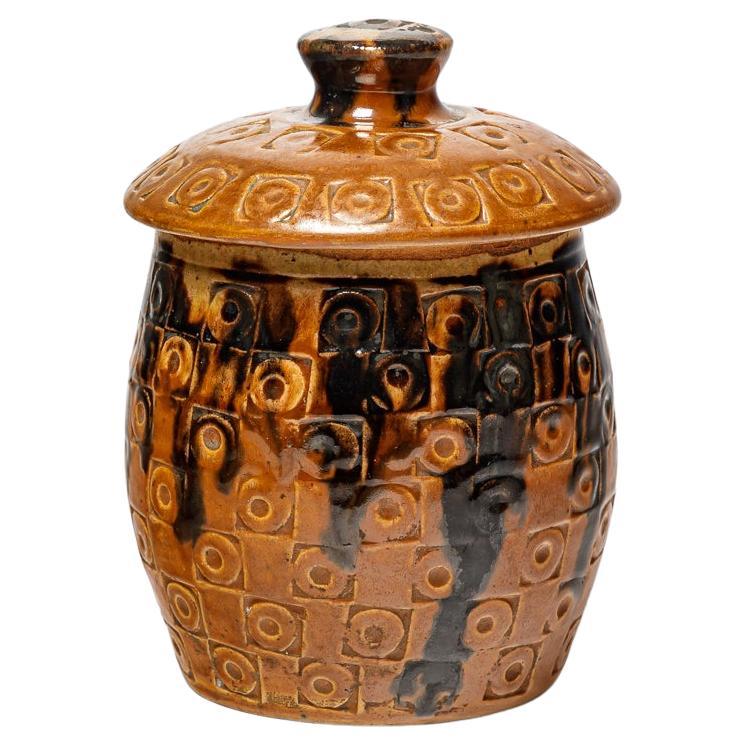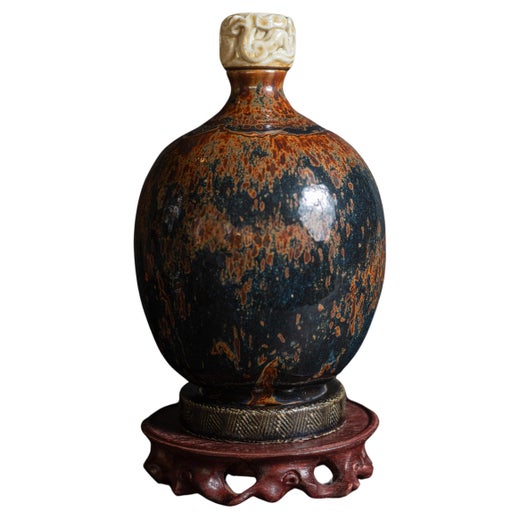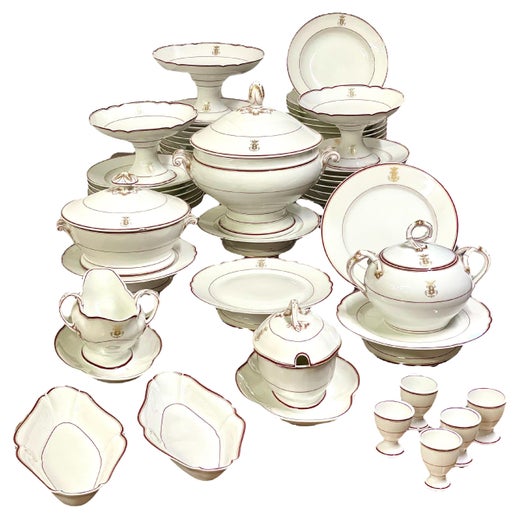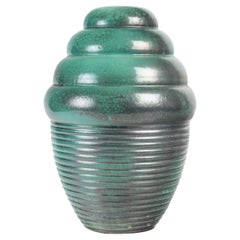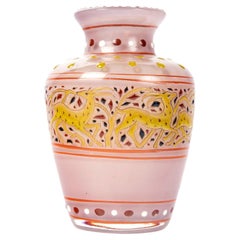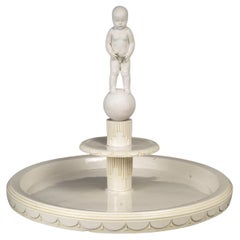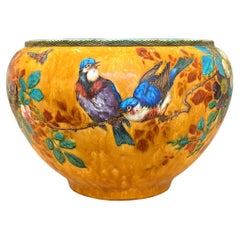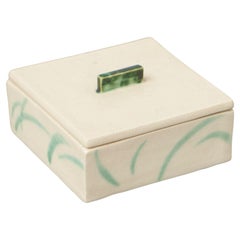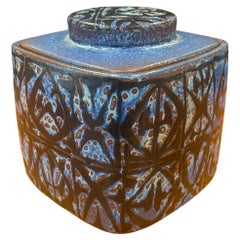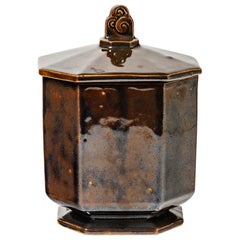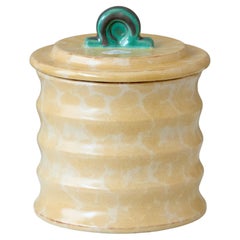An Art Deco Large Sèvres Ceramic Box, Maurice Gensoli, 1933
About the Item
- Creator:Manufacture Nationale de Sèvres (Manufacturer),Maurice Gensoli (Designer)
- Dimensions:Height: 12.6 in (32 cm)Diameter: 9.45 in (24 cm)
- Style:Art Deco (Of the Period)
- Materials and Techniques:Ceramic,Glazed
- Place of Origin:
- Period:
- Date of Manufacture:circa 1933
- Condition:Wear consistent with age and use.
- Seller Location:Saint-Ouen, FR
- Reference Number:1stDibs: LU2612345170342
Maurice Gensoli
Working from 1921 as a decorator at Sèvres and from 1927 as the director of its design studio, Maurice Gensoli remained with the firm until his retirement in 1959.
Gensoli led the ceramics department at Sèvres toward Cubism, designing simple and segmented beaker shapes that were to be decorated with brightly colored heroic figures and idealized landscapes.
Ceramics in the shapes of stylized waves, sea shells, exotic animals and human figures also emerged from the factory during Gensoli's tenure. Elegant undulating bottle vases and chargers with whimsical decorations including star bursts, crackles, and mortared stone became the norm in the 1950s, demonstrating that Gensoli and those working under him looked tirelessly for fresh inspiration in order to keep Sèvres at the cutting edge of current fashion.
Find Maurice Gensoli decorative objects for sale on 1stDibs.
(Biography provided by Galerie Fledermaus)
Manufacture Nationale de Sèvres
A maker of exemplary European ceramics for hundreds of years, Manufacture Nationale de Sèvres has produced porcelain of the highest quality since 1740.
The factory enjoyed royal patronage from its earliest days, and its most prominent patrons in the late 1700s — King Louis XV of France and his mistress, Madame de Pompadour — commissioned some of the period’s most elegant and striking pieces (only the truly wealthy could afford porcelain at this time). The company was originally established in Vincennes but was moved at the request of Madame de Pompadour, in 1756, to Sèvres, near Versailles, so that its operations would be closer to her château.
Sèvres became a mighty and much-revered factory working under a special grant from King Louis XV — the company’s owner as of 1759 and whose abundance of orders for special state gifts put financial strain on the company. Madame de Pompadour is said to have commissioned Sèvres to create an entire indoor garden of porcelain botanicals, for example.
While Sèvres gained a sterling reputation for its soft-paste porcelain wares, the company was late in entering into the production of hard-paste porcelain.
Hard-paste porcelain is the most common type of Chinese porcelain, then a widely exported and profitable product that was not made in Europe until the 18th century. The resources at Sèvres were largely relegated to meeting the demands of Louis XV, and secondly, it did not acquire the secret formula for hard-paste porcelain until 1761.
Until it obtained the coveted secrets behind hard-paste porcelain from a chemist named Pierre-Antoine Hannong — and, years later, gained access to the elusive raw materials to make hard-paste porcelain — Sèvres produced soft-paste porcelain for decades that was widely celebrated but is comparatively a far weaker type as opposed to the hard-paste productions of the company’s rival, Meissen, in Saxony, the first to produce true porcelain outside of Asia.
The artisans at Sèvres applied the rarest and most difficult-to-produce colors to their decorative objects and dinner services. One such color, the bright bleu de roi, became the manufacturer’s signature shade and is found on many of their objects. Sèvres also experimented with rarely glazed or unglazed works that bore no decoration at all — bisque porcelain, French for “biscuit,” refers to unadorned white porcelain sculptures made at Sèvres that resemble white marble after being kiln-fired.
Sèvres marks were applied over the glaze or rendered with cuts by a sharp tool — authentic Sèvres porcelain is most commonly marked with two interlaced Ls that are painted in blue and enclose a third letter. Painters and potters were tasked with affixing marks to record their role in the creation of a particular piece, and as a lot of these artisans’ names are recorded in archival factory materials — and there is also much to be learned at the Sèvres museum — it’s likely that you can accurately identify your Sèvres piece.
Find antique and vintage Manufacture Nationale de Sèvres vases, urns, sculptures and more on 1stDibs.
- ShippingRetrieving quote...Shipping from: Saint-Ouen, France
- Return Policy
More From This Seller
View AllVintage 1920s French Art Deco Vases
Earthenware
Antique 1890s French Art Nouveau Vases
Art Glass
Vintage 1920s French Art Deco Centerpieces
Porcelain
Antique 1870s French Japonisme Planters, Cachepots and Jardinières
Faience
Antique 1890s French Art Nouveau Decorative Boxes
Art Glass
Antique 1890s French Art Nouveau Glass
Art Glass
You May Also Like
Mid-20th Century European Art Deco Decorative Boxes
Pottery
Mid-20th Century Danish Mid-Century Modern Decorative Boxes
Stoneware
20th Century French Art Deco Decorative Boxes
Ceramic
Mid-20th Century Swedish Art Deco Vases
Ceramic, Earthenware
Vintage 1920s French Art Deco Decorative Boxes
Enamel
Mid-20th Century French Art Deco Decorative Boxes
Ceramic
